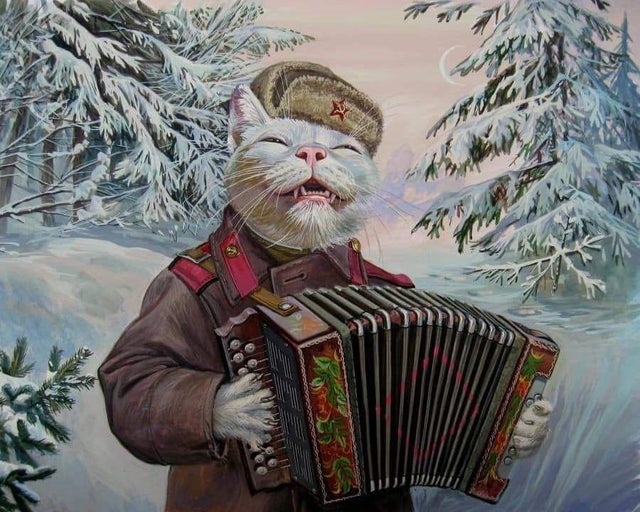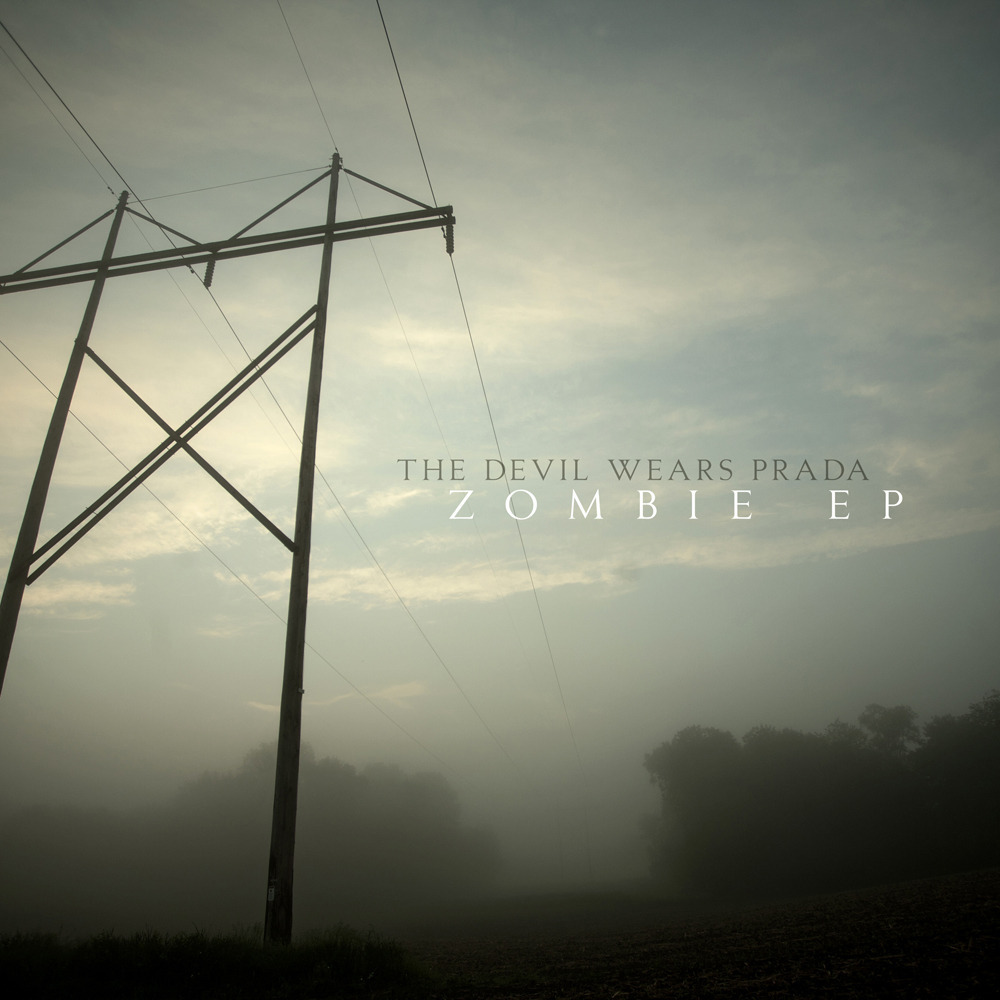I know this seems like an obvious attempt to start a struggle session, but I promise I’m asking in a good faith attempt to learn:) y’all are way smarter and better read than any group I’ve ever been a part of before tbh
I’m listening to the rev left Stalin episode and they’re discussing the holodomor. Clearly a lot of what I thought I knew is capitalist propaganda. However, there also seems to be a possible motivation here to gloss over some of the bad elements of the USSR? I also feel slight alarm bells going off at some parts but idk why really, probably bc it brings up feelings associated w Holocaust denial, even though I know they’re v different issues.
I’m kinda new to the left so I don’t feel like I have the knowledge or the critical thinking skills to tackle this issue on my own.
It seems to boil down to: did the holodomor happen? If yes, was it intentional? If no, was it avoidable?
I’m sure this discussion has happened before so feel free to just link me to stuff haha. Insight appreciated!
There was a natural famine happening at the time and people were starting to starve in central Asia, particularly in Ukraine and Kazakhstan.
Part of the problem was that for generations, a new class of peasants had begun to form who were able to buy and own land, gradually displacing the former feudal system where most of the land was used by peasants for distant landowners who weren't really interested in the region.
This new landlord class (kulaks) basically perpetuated the same feudal system, with other peasants continuing to work for them on the land they acquired. Naturally this exacerbated wealth inequality in the region and gave the landlord class relative privilege and control over the peasant workers.
When the famine hit and people started to starve, the landlord class was relatively insulated from the problem, even being able to hoard food and resources. As the workers became more desperate, they were willing to work for less food, which allowed the landlords to hoard more, which made the workers position more desperate, causing them to be willing to work for less, and so forth in a snowball effect.
All of this was pretty normal for the region. It was a problem, with the relatively wealthy hoarding wealth and the workers becoming increasingly desperate to work for them in the middle of a natural disaster, but it was a problem central Asia had been dealing with for hundreds of years, if not longer. The new landlordism wasn't particularly parasitic when compared to feudalism, but it was parasitic nonetheless.
When people started starving to death the government stepped in and started organizing collective farms, redistributing land and hoarded resources to the peasants so that they could work for and feed themselves in a more efficient, equitable model for everyone.
The landowning class however, like capital controlling classes throughout history, weren't satisfied to work for themselves and allow the peasants to work for themselves alongside them.
Their response was to start sabotaging the collective farms, and to begin raiding and destroying depots where food was being distributed to starving people, as well as burning fields, grain silos, and slaughtering livestock, including breeding stock and egg and dairy producing stock.
Even anti-Communist propagandists like Robert Conquest (whose propaganda was cited extensively during the Cold War before most of it was debunked and he was forced to recant his claims over and over again) claim that the landowning class destroyed about 96 million head of cattle, and possibly twice as much tonnage of grain and other foodstock, completely wrecking the food production capacity of the region in the middle of the famine and exacerbating the problem beyond anything seen before.
The death toll is vastly overblown by those who want to make it out to be a genocide perpetrated the the Soviet government against her own people. The aforementioned Robert Conquest initially claimed a completely unrealistic 20-30 million deaths, before revising his claim by several million just years after his now infamous propaganda piece was published, and again as low as 13-15 million deaths decades later when his claims were immediately and categorically disproven by the opening of the Soviet archives.
As genuine investigative research continues to debunk claim after claim made by propagandists like him, the numbers continue to dwindle and the legacy of the self-proclaimed "Cold Warriors" is continuously eroded. To this day, the Ukrainian government claims ~4 million cases of starvation in the region during that period, completely disregarding blatantly false "research" conducted from a time before evidence was even available.
Eventually before his death, Conquest was forced to admit that there was no way the Soviets could have caused the famine, although he stubbornly refused to admit that they did anything to prevent it or that the land-owning capitalist class destroying 2-4 million tons of food for every starving person and wrecking the productive capacity of the region might have been responsible, despite this being the inevitable conclusion of his lifelong body of work, ironically vindicating the Soviets through desperate attempts to portray them as villains.
Decades of propaganda and its consequences are hard to undo however, and these indisputable, verifiable facts of recorded history are never welcomed in certain circles. The western public consciousness truly is a poisoned well, and facts alone aren't enough to undo that damage.
credit to /u/spookyjohnathan (the reddit user, not sure if they are here on chapo.chat)
This is great. just adding a few points
There were mismanagement issues by the Soviets as well which exacerbated the issue.
Misreporting by local Kulaks or corrupt officials meant that initially the Soviets continued grain exports (grain being one of the only trade options the Soviets had to get much needed agricultural machinery, because the west had shut down Soviet gold and mineral exports. This created a catch 22 where they needed to export grain they didn't have, or they wouldn't be able to have a secure grain production.)
This in turn caused a bunch of issues up and down the chain of command, where starvation panic and Kulak revolts were conflated. Measures to bring what they thought was a simple withdrawal of food supply (rather than the destruction of the supply) under control resulted in them not taking adequate famine prevention measures quickly enough, and removing remaining grain from the area.
Once senior officials did realise the scale of the disaster, the response was rapid. Stalin's writings are not thrilled.
Thanks for sharing. This is a great way to pass the info on further. I'm going to copy this now for future lib re-education.
The Kulaks (who, yes, were monsters and did engage in sabotage in the past) didn't actually have much to do with the famine in the 30s, as they had already been pretty much completely eliminated by that point. Conquest is citing the official statements of the USSR, who blamed the agricultural shortfall on the Kulaks, but the Soviet archives show that the cause was much more complex than that.
Davies and Wheatcroft, in The Years of Hunger: Soviet Agriculture, 1931-1933, explain them. It's hard for me to summarize all of it and the relevant section is only like twenty pages, so please read "(E) CAUSES OF THE FAMINE".
The gist is that planning had overestimated grain yields based on overly optimistic predictions of improvements on previous years' yields. Grain was exported under the assumption that the leftover surplus would be sufficient, but it wasn't. Drought during the growing season and heavy rainfall during the harvesting seasons resulted in low output and high spoilage, meaning much less grain was produced than expected.
The reduction in livestock from 1928 was a product of diverting grain from feed in the countryside to urban population centers. In order to survive capitalist onslaught and develop out of Medieval poverty, the USSR needed to industrialize rapidly, which meant more food for the industrial workers. However, they took too much grain from the countryside to maintain their draught animals, which, coupled with the bad weather, resulted in much lower yields than planned.
When it became clear that a famine was occurring, the USSR did everything in its power to minimize starvation, and Stalin personally pressed for more grain to be reallocated to the countryside. However, the rapidly industrializing urban centers were prioritized, for good reason.
The people who starved were the farmers, mostly in Ukraine, but this wasn't an attempt at ethnic cleansing. Meanwhile, the party used the Kulaks as a scapegoat, even though they didn't really exist at that point. And, honestly, I think that was the right call; they couldn't have just said, "hey, the weather was bad and also we kind of fucked up and that's why you're starving to death", and expected to still have the support of the people. The authors describe this overall response as "ruthless and brutal", an example of a "genuflection to orthodoxy" as Parenti puts it; even though they're in the process of dismantling the narrative of Stalin being a brutal, malicious dictator, they still aren't willing to fully break from it.
Do you know why people starved mostly in Ukraine v other rural areas?
Inadequate use of crop rotation and particularly bad weather:
Ukraine was affected particularly badly by the expansion of the sown area. It already had a much lower level of uncropped arable than in all other regions of the USSR, with the exception of the highly commercial Leningrad region. According to the planning documents, the Ukrainian level of fallow was equal to 27.7 per cent of the sown area in 1927/28, and was projected to fall to 18.1 per cent in 1932/33.137 The USSR average was 59.1 per cent, projected to fall to 41.7 per cent. An external factor considerably complicated the situation in Ukraine. Bad weather led to exceptionally large winter killings of the autumn sowings for both the 1928 and 1929 harvests, and, to compensate for these, spring sowing was considerably increased. By 1929, rational crop rotation had been seriously undermined; and the increase in the sown area in 1930 and 1931 squeezed the fallow land still further.
Throughout the USSR, the reorganisation of the land, and the expansion of the sown area, disrupted the traditional arrangements for the cultivation of the soil, but for several years they were not replaced by an improved cropping system.
It was not until the autumn of 1932 that the restoration of proper crop rotation received the strong support of the authorities (see pp. 231–4). Meanwhile, much damage had been done. Such a dramatic expansion of sown area and reduction of fallow, without improved crop rotation and the careful introduction of alternative means for rejuvenating the soil with fertilisers or manure, was bound to lead to the reduction of yields and an increased likelihood of crop diseases. By 1932, in many regions, and particularly in Ukraine, soil exhaustion and crop diseases were widespread.
Thanks so much!!! this is really great info and sources. Has anyone seen any death toll approximations out there that aren’t so blatantly false? I feel like an understanding of the actual scale of the famine would be really helpful for evaluating the Soviet response
It's likely impossible to get good numbers. There were other things happening including a Typhus epidemic which would skew death numbers. The thing to understand is this is a region that like many regions had for centuries experienced periodic famines that killed from tens of thousands to millions, regularly, without anyone blaming anyone in particular for them. There were no large scale famines which resulted in large scale death after the Soviet Union arose from the great patriotic war (WW2). There were famines, there were problems with weather and shortages, but not the kind of large-scale death you saw before.
This was really the last big one right? I'd say going through it and dealing with the aftermath kept it at the forefront of everyone's mind as something to prevent in the future at all costs. The fact that not only was this famine was a natural/historical thing, but that the cycle of famine was broken after it shows that it wasn't some malicious tool of genocide, but a fuck up at preventing the forces of nature from doing what they had done for centuries.
Wow, good comment. Does this mean the Holodomor did happen, was smaller than people think, and was also
committedcontributed to by the opponents of the Soviet Union? They destroyed their food and people starved- pretty straightforward.It does seem like the Soviets fucked up and overreacted leading to more deaths, but nothing on the scale of killing all the livestock and burning grain. They also outlawed gleaning which is fucked.
I would be careful about saying the famine was committed by the Kulaks. They had a big hand in it. But I believe the primary cause was still environmental.
Nope. The word "holodomor" means "murder by hunger", which didn't happen. It was just a famine.
little known fact: by 1934, Stalin was wider than he was tall. it baffled his doctors at the time, who simply could not get him to stop shoveling kulak flesh into his mouth
according to a thread on /r/askhistorians i saw: did stalin wake up one day and think to himself "hmm today I will starve ukraninans to death". no he didn't. however he could have done more to alleviate the situation.
Was there a famine in the USSR in the 30s? Definitely. Was it a genocide planned by the Soviet state? Definitely not. Famines had happened for time immemorial under the Russian empire - nobody accuses those of being genocidal. The Dust Bowl was happening all through the 30s in the USA - due to a mix of environmental factors and bad farming methods, again, nobody accuses the US government of genocide (not in this case anyway).
I think the same applies in the USSR. A mix of bad weather and mistakes made with farming, essentially a “run of the mill” famine. Also, the rich peasants were 100% hiding their produce and doing spiteful things like killing livestock rather than let it be collectivised.
The effort to paint the famine as “The Holodomor”, some kind of genocide, has been a nazi project since the very start. This really ramped up after the Holocaust in an attempt by nazis to draw a false equivalence between their crimes and the USSR, and Ukrainian fascists loved spreading it too. And, as always, the capitalists were more than happy to go along with the Nazis because it studied their purposes for Cold War propaganda.
ETA: at a bare minimum stop calling it Holodomor. Every time someone does it’s a victory for fascist propaganda.
basically he went back in time because of bran and because he said it that way, that's why he always says that right? like "hold the door" -> "holodomor" pretty simple really
If you want a marxist counterargument to that revleft episode Swampside Chats did one. I recommend listening.
So glad this exists. That episode had some just garbage sources and highlights some really unhealthy tendencies on the left.
Yeah, I'm certainly no expert on Russian history but it seems like there's a lot of leftists who read Grover Furr and are done with it, or something. The guest on the episode I posted has a podcast on Russian history, SRB (standing for Sean's Russia Blog), it seems pretty good + thorough to me. (Although, as I said, I'm still learning).
Thank you so much for this! This is exactly the type of shit I’m looking for. I’m double stoked that it’s in audio format which I fuck with heavy (Tbh I feel like having to read so many academic texts in college has somehow made me p much illiterate now lol)
Academic resources: https://docs.google.com/document/d/1Gxwhh-vdeB--47HM-20cEVRC9eAMhrapbNf0Sk8VSOs/edit#heading=h.ty1cm2sp6wbz
Here's my response to someone saying it was an intentional genocide. Literally just ask the people there at the time. Not even from the USSR or communists.
-
Then why did it hit parts of Russia,Kazakhstan,Romania,Poland and the EASTERN part of Ukraine where there was and still is a major Russian population?
-
Why did Stalin then send aid from the other republics to relieve the famine?
The Uk.S.S.R. received from other republics more than 320,000 tons of grain, in other words, nearly twice as much as the republic ‘exported’, and was authorised to use (from both internal and imported sources) some 520,000 tons of grain as seed, about two‐thirds of total seed loans for the entire Soviet Union.’ https://books.google.rs/books?id=jpv0NICOEb8C&pg=PA157&redir_esc=y#v=onepage&q&f=false
https://www.uio.no/studier/emner/hf/iakh/HIS2319/h16/pensumliste/stalin-and-the-soviet-famine-of-1932-33_-a-reply-to-ellman.pdf
- Every single source claiming it was an intentional genocide goes back to literal fascists. The Hearst Press run by William Hearst, at the time even known as America's #1 fascist, whose newspaper was bought by non other than Nazi Germany in 1935. They used photos from Thomas Walker who was apparently in Ukraine in 1933/4 tho his American colleague in Moscow, Louis Fischer, did some digging and found out he had never passed anywhere near Ukraine and the photos he used were edited photos of people dying in the civil war era famine and WW1 famines. Some photos not even from Russia but from Austro-Hungary.
http://neodemocracy.blogspot.com/2017/12/fraud-famine-and-fascism-hearst-press.html
- The actual causes are as follows:
-Kulak sabotage(From Professor Scuman who was actually in Ukraine at the time says: "Their [kulak] opposition took the initial form of slaughtering their cattle and horses in preference to having them collectivized. The result was a grievous blow to Soviet agriculture, for most of the cattle and horses were owned by the kulaks. Between 1928 and 1933 the number of horses in the USSR declined from almost 30,000,000 to less than 15,000,000; of horned cattle from 70,000,000 (including 31,000,0000 cows) to 38,000,000 (including 20,000,000 cows); of sheep and goats from 147,000,000 to 50,000,000; and of hogs from 20,000,000 to 12,000,000. Soviet rural economy had not recovered from this staggering loss by 1941. ... Some [kulaks] murdered officials, set the torch to the property of the collectives, and even burned their own crops and seed grain. More refused to sow or reap, perhaps on the assumption that the authorities would make concessions and would in any case feed them. The aftermath was the "Ukraine famine'' of 1932--33 .... Lurid accounts, mostly fictional, appeared in the Nazi press in Germany and in the Hearst press in the United States, often illustrated with photographs that turned out to have been taken along the Volga in 1921 .... The "famine'' was not, in its later stages, a result of food shortage, despite the sharp reduction of seed grain and harvests flowing from special requisitions in the spring of 1932 which were apparently occasioned by fear of war in Japan. Most of the victims were kulaks who had refused to sow their fields or had destroyed their crops.")
-A drought hit Ukraine 3 years in a row (in his A History of Ukraine, Mikhail Hrushevsky, described by the Nationalists themselves as Ukraine's leading historian, writing of the year 1932, claimed that 'Again a year of drought coincided with chaotic agricultural conditions'.
Professor Michael Florinsky, who struggled against the Bolsheviks during the Civil War, noted: `Severe droughts in 1930 and 1931, especially in the Ukraine, aggravated the plight of farming and created near famine conditions'. )
-The third cause of the famine was a typhoid epidemic that ravaged Ukraine and North Caucausus. (Dr. Hans Blumenfeld, internationally respected city planner and recipient of the Order of Canada, worked as an architect in Makayevka, Ukraine during the famine. He wrote: `There is no doubt that the famine claimed many victims. I have no basis on which to estimate their number .... Probably most deaths in 1933 were due to epidemics of typhus, typhoid fever, and dysentery. Waterborne diseases were frequent in Makeyevka; I narrowly survived an attack of typhus fever.'
Horsley Grant, the man who made the absurd estimate of 15 million dead under the famine --- 60 per cent of an ethnic Ukrainian population of 25 million in 1932 --- noted at the same time that `the peak of the typhus epidemic coincided with the famine .... it is not possible to separate which of the two causes was more important in causing casualties.')
-The fourth cause of the famine was the disorder provoked by the reorganization of agriculture and the equally profound upheaval in economic and social relations: lack of experience, improvisation and confusion in orders, lack of preparation and leftist radicalism among some of the poorer peasants and some of the civil servants. (Hans Blumenfeld gives, in his autobiography, a résumé of what he experienced during the famine in Ukraine: "The famine was caused by a conjunction of a number of factors. First, the hot dry summer of 1932, which I had experienced in northern Vyatka, had resulted in crop failure in the semiarid regions of the south. Second, the struggle for collectivization had disrupted agriculture. Collectivization was not an orderly process following bureaucratic rules. It consisted of actions by the poor peasants, encouraged by the Party. The poor peasants were eager to expropriate the kulaks,'' but less eager to organize a cooperative economy. By 1930 the Party had already sent out cadres to stem and correct excesses .... After having exercised restraint in 1930, the Party put on a drive again in 1932. As a result, in that year the kulak economy ceased to produce, and the new collective economy did not yet produce fully. First claim on the inadequate product went to urban industry and to the armed forces; as the future of the entire nation, including the peasants, depended on them, it could hardly be otherwise .... `In 1933 rainfall was adequate. The Party sent its best cadres to help organize work in the kolkhozes. They succeeded; after the harvest of 1933 the situation improved radically and with amazing speed. I had the feeling that we had been pulling a heavy cart uphill, uncertain if we would succeed; but in the fall of 1933 we had gone over the top and from then on we could move forward at an accelerating pace.' )
And to top it all off here's what the Ukrainian nationalist Isaac Mazepa had to say about it
"At first there were disturbances in the kolkhosi [collective farms] or else the Communist officials and their agents were killed, but later a system of passive resistance was favored which aimed at the systematic frustration of the Bolsheviks' plans for the sowing and gathering of the harvest .... The catastrophe of 1932 was the hardest blow that Soviet Ukraine had to face since the famine of 1921-- 1922. The autumn and spring sowing campaigns both failed. Whole tracts were left unsown, in addition when the crop was being gathered ... in many areas, especially in the south, 20, 40 and even 50 per cent was left in the fields, and was either not collected at all or was ruined in the threshing."
--Original credit for above comment to reddit user Denntarg
-
A few of the sources they used in that episode were really bad, I've commented on it in my profile before. I highly reccomend Wheatcroft's, J Arch Getty's, and Moshe Lewin's work on the subject, and the swampside chats episode that was linked in this thread.
I'm not super familiar with the specific situation so I'll defer to others in this thread, but I'd still like to add my two cents - few (if any, even) famines in history were truly caused by nature. Farmers are smart, and tend to have diverse income streams and food sources, if something incredibly crazy happens one year that kills off all the crops, they can still rely on food stores and livestock to survive. Look at any famine and you'll generally find a war, aristocracy/landlords keeping people impoverished, mismanagement, or other human causes. It's only when people are already dirt poor that things like a drought will lead to starvation.
A great example of this is the Irish potato famine. It's true that the failure of the potato crop was a natural occurrence. It's also true that food was being exported to England during the famine to pay the English landlords who had decided they owned everything. Nature makes an extremely convenient scapegoat because (what should be) small problems occur all the time, and it is often the case (as with the potato famine) that those with the power to set the narrative are also the ones with the power to have prevented it, and thus have every reason to deflect blame onto the weather.
As for which humans were at fault in this specific situation, I don't know enough to say, but I find emizeko's narrative credible. All landlords are bastards, after all, and farms are much less efficient when the farm is owned by a landlord because the farmer does not receive the benefit of labor spent improving the land and nurturing the soil. But I'm skeptical of any narrative that attributes the primary cause to the weather, for the above reasons.
I'm sure some people will disagree with me, but I believe it's important to say clearly that nature is not the enemy, because of how often it is used to deflect blame. When r/neoliberal tries to justify sweatshops, for example, their argument depends upon the assumption that the natural state of humanity is so abysmal and miserable that sweatshops are an improvement. Making it seem like the world is just naturally awful is a very useful piece of propaganda for the people who are making the world so awful, not just because it deflects blame but also because it serves as a boogeyman - "If we change anything, then we disrupt the delicate balance by which we've escaped the horrible clutches of nature where everyone dies at 40 and you starve every time it doesn't rain."
This doesn't answer the question, but imo, whether or not the Holodomor happened and how is not a relevant question to ask (except out of curiosity), and that's true no matter what your position is on it.
What are the actual ideological consequences? Everyone agrees that, had it been a state-organized genocide, that would be extremely bad and morally wrong. If there were a significant amount of people going around saying "the Holodomor happened and was a purposeful genocide and I think that was a good thing" then it would be highly relevant because those people would be fucking nuts and would need to be addressed in some way.
So if it's just the facts at issue, then you could use it as an argument for or against the USSR's governmental structure; it would be a reason to oppose that kind of organization, the logic being a government that allows that sort of thing is a bad idea. In that case, though, basically everyone agrees that the state could have orchestrated such a genocide if it for some reason wanted to; this isn't unique to the Soviet Union, plenty of states with all sorts of different organizational structures have committed terrible atrocities. So if someone is trying to make the (bad) argument "Soviet-style government enabled the Holodomor and is therefore bad," whether or not it actually happened and was a genocide is paradoxically not relevant here either.
Ultimately the reason people care so much about it is to either make the point "USSR good" or "USSR bad" which I see as pointless and more of an aesthetic thing than something with actual consequences in the real world. As a leftist I'm not really invested in whether people have an overall positive impression of the USSR, I'm invested in determining which of their practices were good and which were bad and learning lessons that can actually be applied in the future instead of LARPing that it's 90 years ago.
It's true that people use it to propagandize against socialism, but even then, it seems better to point out that socialism isn't inherently tied to the actions of socialist states, or states that claimed to be socialist, than to get into arguments over what those actions were.
I'm going to talk around this in the context of revolution vs reform.
Revolution isn't pretty but sometimes it's critical for achieving a particular set of goals. For a revolution to be successful, you need to maintain control of the cities and be able to leverage the output of such cities to control the broader nation.
During China's great leap forward which also is similar in characteristic to what people call the holodomor, in order to support the newly large populations moving to cities, they had to completely rebuild their entire food supply chains in a very short period of time. This resulted in taking food from former substance farmers to the point of starvation in order to support the broader country. The collapse of a supply chain is never not massively destructive and always results in problems that take a very long time to recover from (it's a big reason why countries bail out companies during a recession).
If they acted slower than they did, the country might have been taken down sooner, a reformist approach is to not touch the existing supply chains and slowly figure out what works and doesn't.
Another example of something similar to this would be to compare land reform in both south africa and zimbabwe. Zimbabwe did it rapidly but people starved, in South Africa it's been a slow going process that hasn't actually resulted in as much transfer of land as people wanted.
During China’s great leap forward which also is similar in characteristic to what people call the holodomor, in order to support the newly large populations moving to cities, they had to completely rebuild their entire food supply chains in a very short period of time. This resulted in taking food from former substance farmers to the point of starvation in order to support the broader country. The collapse of a supply chain is never not massively destructive and always results in problems that take a very long time to recover from (it’s a big reason why countries bail out companies during a recession).
The Great Leap Forward was a program of attempting to add basic industrial production to already established rural communes based on the apparent successes of some communes at doing just that, for a wide variety of material reasons ranging from wanting to decentralize their industry and move it inland from the comparatively vulnerable coasts to wanting to build the productive capital needed to mechanize rural agriculture and logistics infrastructure. This caused a serious agricultural labor shortage in some regions (and most of China's less savory policies resulted from the need to maintain a strict balance between rural agriculture and urban industry in order to avoid famine) which resulted in massive shortfalls in production which were then misreported by local officials, resulting in the expropriation of unsustainable amounts of grain from famine struck regions until the central leadership discovered how horribly the logistics and feedback mechanisms had failed and moved to correct the problems and alleviate the famine.
I appreciate you taking the time to comment. Im a little confused tbh if you don’t mind clarifying a few things:)
Correct me if I’m wrong I thought at the time like 90% of the people in the Soviet Union were still rural/peasantry...why would so much food need to be taken to the point of risking starvation in order to provide for the much smaller pop In the cities?
Had the conditions at the time lowered production that much?
If you can't figure out whether or not it happened, why not read some historical sources yourself?
Well, I will. But a big point of the ep is that a lot of sources cited surrounding the issue are unreliable or straight propaganda and I don’t know if I could reliably spot that. Also, it’s a very big issue and I’m a slow reader so I thought reading other ppls takes could at least help me understand the debate and the sources. Idk why I would need to start from scratch alone when I am part of a community of people already familiar with the subject.
There are some easy sanity checks to tell with soviet historiography. First is the source pre archive opening, or was it given specialized access before hand like Getty, or is it using historical documents made available outside the USSR. If it fails this check, look for something more modern as the history has changed a lot after archives were opened in the late 80s. There are many good historians to look for in various Slavic and Russian studies departments. Two, was the source written by an activist or a historian. Not all activist literature is bad, but it is first and foremost not history. Three, what do other soviet historians say about this person. Even liberal historians respect the Marxist ones, and the Marxist ones really hate cranks and liberals and will say if something is bad history. If they say nothing, or dismiss casually, or go out of their way to point out the crap in their arguments that's a warning sign that that person is not taken seriously by historians (giant red flag on people like Grover Furr or Tottle) and you shouldn't either.
This is so so helpful thank you! Any advice on identifying reliable primary sources?
Okay so all primary sources will be colored with the historical and political context and ideology of the writer. One thing to consider when looking at a primary source is who the audience was. Sources for the public, such as the conspiracy laden Pravda were designed by the party for particular aims of getting the public to believe things, and the writers themselves were brought up in a conspiracy prone institution (after all the party was facing so many threats and wars and secrecy that it ended up just laying on conspiracy theories in it's own documents). Then there are documents that were considered for different levels of the party, and there are conditions of that institutions that result in those documents having their own biases. Generally internal documents that were pulled out of archives are factually accurate in that they are the real beliefs of the people writing them, and figures on material items are not too far off. However the conditions of the institutions and people in the party can result in clashes in conflicting documents. For example figures on grain production internal to the party were actually accurate, however sections of the party, and Stalin, thought they were lying. Furthermore, some of the collectivization drives may have actually been highly influenced by a conspiracy theory that Britain was going to invade via central Asia, which got into the zeitgeist of the party in 1927 (even though in reality the British empire was already beginning to crumble, they were blinded with the pre revolution status of Britain as the biggest imperial threat)
Also really keep in mind that anything published as political theory will be extremely colored by political context, and the actual ideology of the writer.
Well because this community is also going to present you with straight propaganda
I’m obviously not gonna take everything at face value. also it’s not a decided issue on the left I believe so seeing the debate is useful. from what I’ve seen here ppl are much more truthful and give a lot better sources than what I would get if I googled holodomor.
Also, If you’re genuinely concerned about me not taking a purely solo approach then I’d appreciate any good historic sources you could guide me to.







